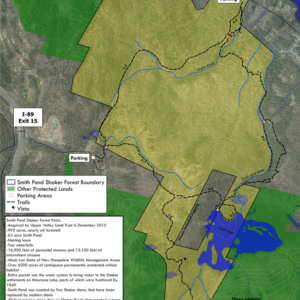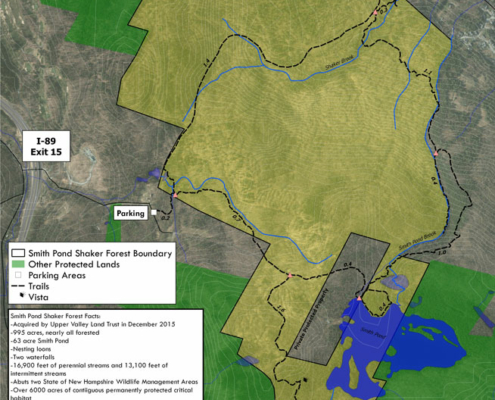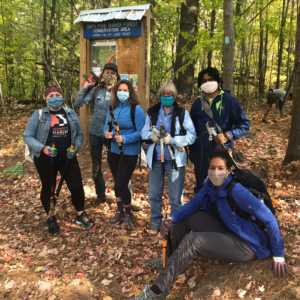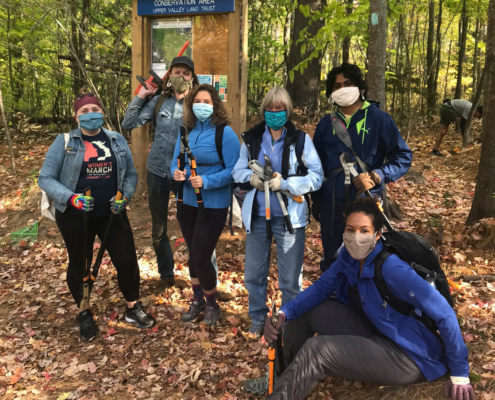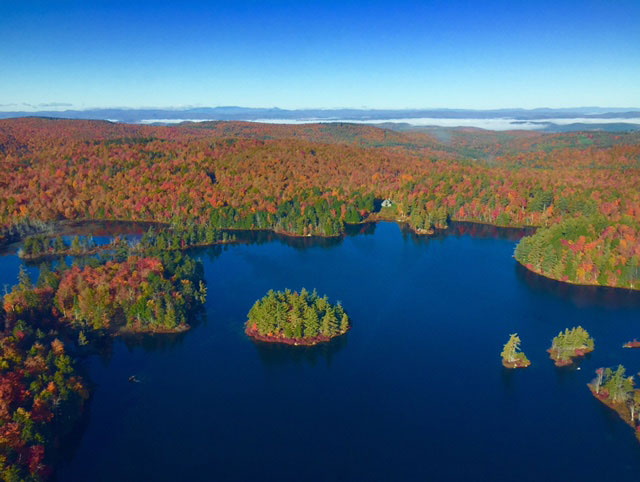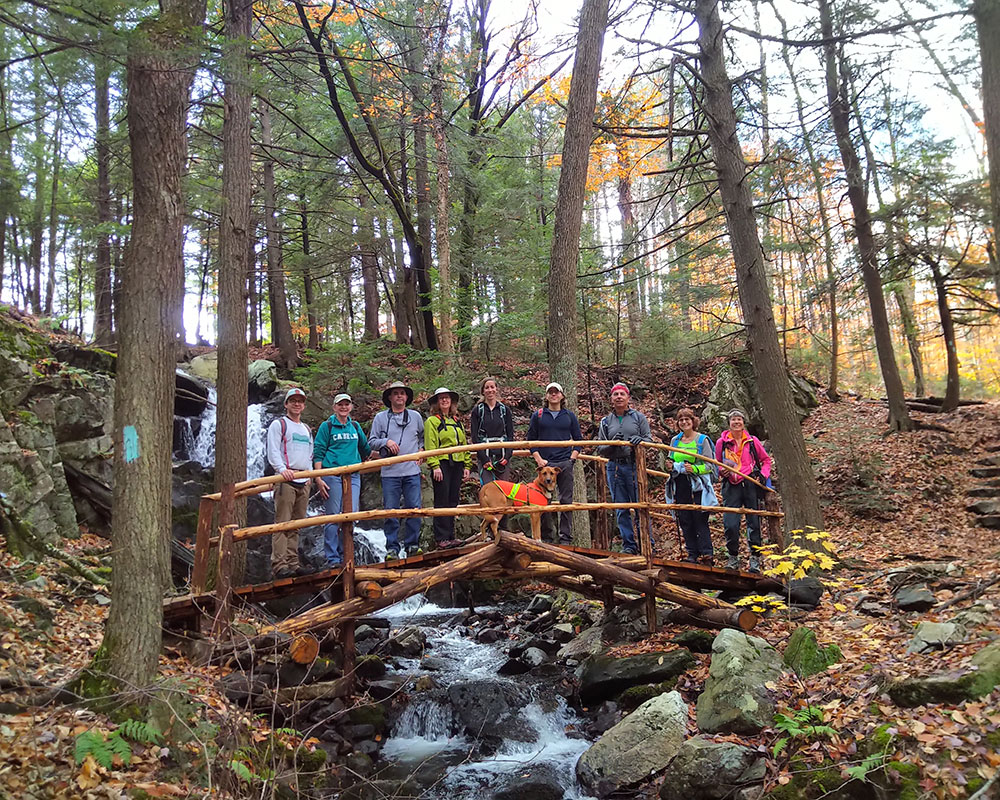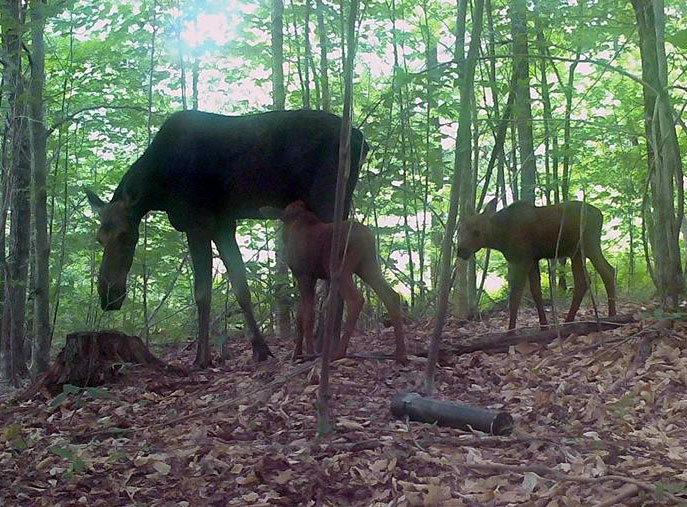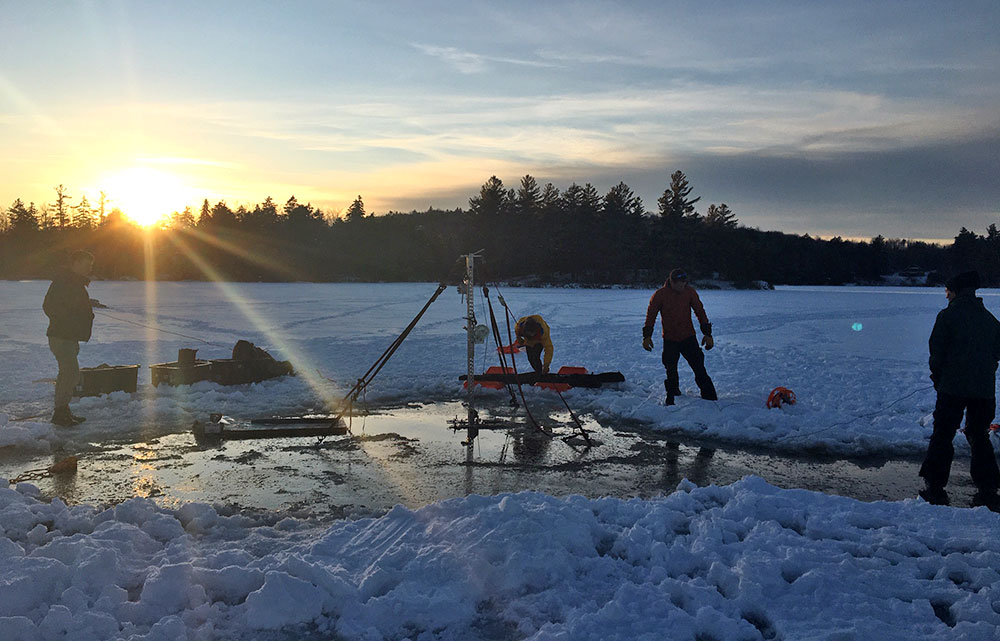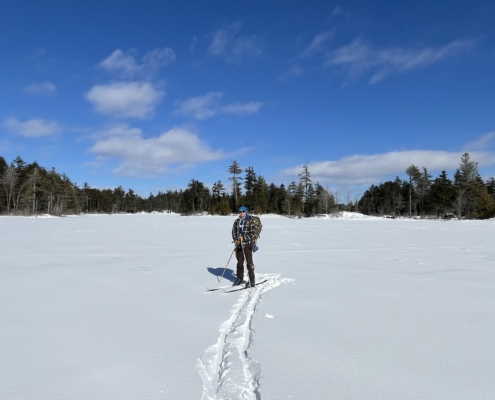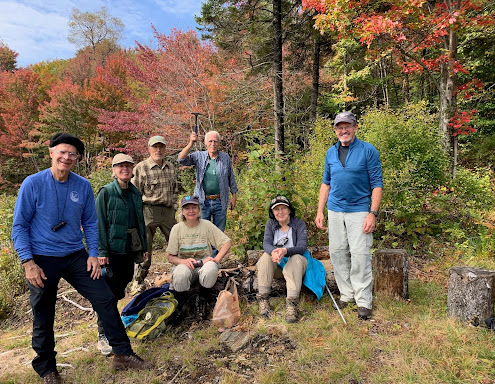Chestnuts
UVLT has found stump sprouts, saplings, seeds, pods, and mature chestnut trees at Smith Pond Shaker Forest Conservation Area. Before 1904, American Chestnuts were a common tree in North American forests. They grew rapidly and up to 100 ft tall. They were useful for their hardy and abundant nuts that could feed wildlife and livestock. Their wood is straight-grained, lightweight, and rot-resistant, making it well suited for fence posts, home and barn construction, and fine furniture.
Then in 1904 a fungal pathogen, commonly known as Chestnut Blight, was introduced from Asia to the US and spread rapidly through New England Forests. By 1940, most mature chestnut trees had been wiped out from this disease. The fungus enters the tree through damage to the bark and spreads to the underlying tissue, killing each layer as it moves through. The tissues can no longer transport water and nutrients throughout the tree from the roots and the tops of the trees begin to die. The fungus spreads through the air, infecting all of the nearby chestnut trees. The only mature American Chestnut trees left standing are those without another Chestnut within 10km.
Some chestnuts have survived by sending up stump sprouts that grow vigorously in disturbed sites, such as areas that have been logged. But eventually, these trees will also become infected with blight and die back. Very few trees will reach reproductive maturity. The Upper Valley is at the northern reaches of the American Chestnut tree’s range. It is also at the northern reaches of the fungus’s range and because of this, there are more healthy, unaffected trees in our area than anywhere else in the nation.
To date, 16 American Chestnut trees have been identified on the property, some of which can be seen from the trails. The largest trees so far identified on the property are seven inches in diameter and 35 ft high. At least five of these trees are producing nuts.

